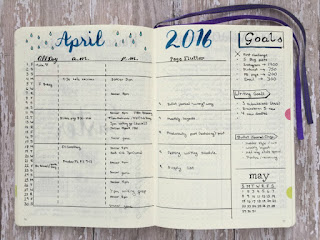Have
you heard about bullet journaling or “BuJo” as some practitioners call it? I hadn’t until I read an announcement
from Fiction Addiction, an independent bookstore owned and operated by Jill
Hendrix in Greenville, S.C. Jill is offering a course about bullet journaling
on Thursday, February 22, at 6:00 p.m. The cost is $25, which is redeemable on
a purchase of supplies available that evening in the book store. If there is
sufficient interest, an afternoon course will be offered.
 |
| Advertisement for the Course Offered by Jill Hendrix |
From
the advertisement, I could see that bullet journaling could be used for keeping
a calendar or agenda. I wondered, why offer this course in February instead of
at the beginning of the year?
Then,
I began reading about the subject. At http://bulletjournal.com/,
I learned that bullet journaling was described as “the analog system for the
digital age.” It was developed by Ryder Carroll, a “digital product designer
living in Brooklyn, N.Y.” Mr. Carroll has trademarked the names “Bullet Journal”
and its abbreviated form “BuJo.” Rachel Wilkerson Miller, a writer, editor, and
blogger, also based in Brooklyn, N.Y., has written several books about the
technique, which she calls “dot journaling,” maybe because practitioners are
encouraged to use notebooks with dot grids as a guide for their own creations.
Ms. Miller has been criticized in her Amazon reviews as appropriating
trademarked information that Mr. Carroll has available free online. You can take a look at
her website at http://www.rachelwmiller.com/
and compare it with Mr. Carroll’s site to see what you think.
Anyway,
bullet or dot journaling is a do-it-yourself organizer that can include as much
or as little information and structure as the preparer wants. Ryder Carroll has
some great videos to explain how to get started in his online section Bullet
Journaling 101. They are simple, straight-forward, and concentrate on the
focus--how to be efficient in organizing your life. They set out the method
without complicating it with any artistry a preparer might wish to bring to the
process.
What
is the method? According the Mr. Carroll, through bullet journaling you can track
the past, organize the present, and plan for the future. First, number the
pages of your journal. Second, label the first few pages as “index” so that you
can list where you’ve written certain items throughout the journal. Third,
create a future log, diving two pages into a six-month or longer organization
where you keep lists of tasks and events that must be handled. Fourth, use
two pages to make a monthly log, with a calendar on one page and a task list on
the other. Fifth, through a short hand system, you can list what you need to
accomplish. A filled in dot is for a task (which later can be “x-ed” when the task
is completed). A star next to
a dot means the task is important. An oval signifies an event (and can be colored in when the event is
over). Indicate notes (things you need to remember) by a dash. Sixth, at the end of a month, set up the
next month’s log. If you have tasks that have not been completed, consider “migrating”
them, either forward into the next month, or back into your six month
projection. Mr. Carroll uses a greater than sign > if the task goes to the next
month’s list and a less than sign < if it goes back into the six month
projection.
Many
aspects of one’s life can be included in the bullet journal: obligations for
home, work, or school; routines or patterns such as exercise, diet, or writing;
and personal reflections, like journal entries. A cottage industry seems to
have grown up around bullet journaling, very similar to accessories for
scrapbooking. You can purchase books, pens, and stencils to help you create a
very unique product.
In some respects, I see this as a natural off shoot of the
adult coloring books, only instead of being just relaxing, bullet journaling
combines creativity and productivity. Not to mention it encourages a
generation that grew up with computer graphics to take a chance on using those
old fashioned tools of pens, pencils, and rulers to sketch out their own
destinies.
After learning about the method, I understand how it’s adaptable and can be started at any time. I’m
tempted to try it. How about you?

Hi Paula, I've been wondering about bullet journaling, and now I'm tempted to investigate further. Thanks for sharing this informative post.
ReplyDeleteJoanne, thanks for your comment. I'm like you, tempted to try it. We'll have to compare notes!
ReplyDelete